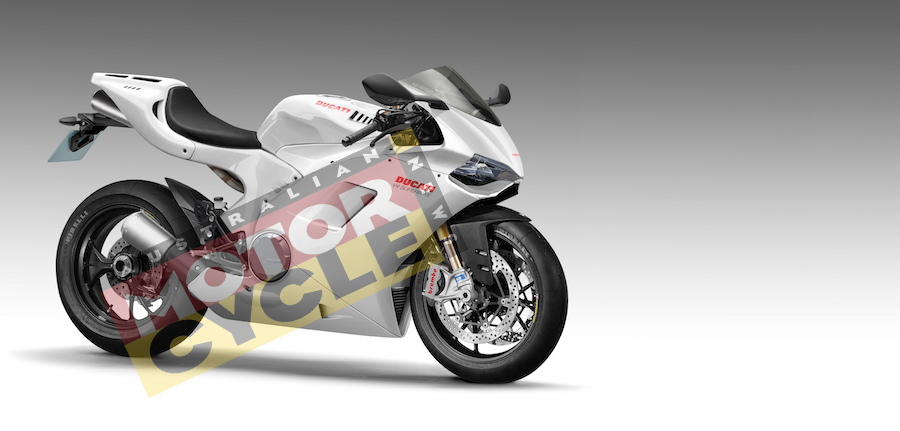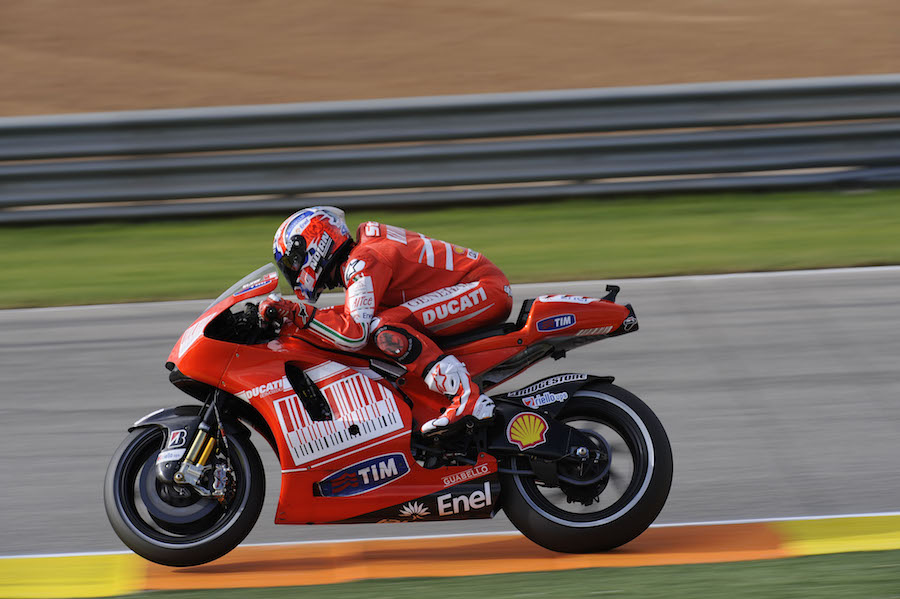The 2018 replacement for Ducati’s 1299 Panigale is set to use a 1000cc V4 engine derived from the Desmosedici MotoGP bike.
A Ducati V4 superbike? – Speaking to the press after the firm’s 2017 MotoGP team launch, both Ducati boss Claudio Domenicali and Sporting Director Paolo Ciabatti referred to the forthcoming bike.
Domenicali said: “The engine development we have made in MotoGP has been exceptional; we have an engine which is very reliable, very light, compact and has a lot of interesting technology. We are seriously thinking of introducing it to regular customers as it is a masterpiece of engineering.”
He went on to explain that such a bike would be a mass-made model rather than a limited-edition über-bike like the firm’s old GP replica, the Desmosedici RR.
Domenicali also revealed that the bike would be intended for use in WSBK, which means its price would have to fall below the €40,000 (A$57,000) cap that prevents competitors from entering expensive exotica into the series.
While he wouldn’t reveal firm dates, Ducati is known to be working on a replacement for the 1299 Panigale right now.
The 1299 is the only model in Ducati’s 2017 range that doesn’t meet the newly introduced Euro 4 emissions limits. To keep it on sale in Europe, the firm has had to apply for ‘end of series’ exemption from the new limits – a facility that’s designed to allow small numbers of non-compliant bikes to be sold on the basis that they’re coming up for replacement. While the exemption theoretically lasts two years, until the end of 2018, it’s sure to be replaced for the 2018 model year.
Although the new V4 will become Ducati’s range-topping superbike, it won’t mark a wholesale move away from the V-twin layout. Other models – the Monster, Multistrada, Supersport, Hypermotard and even the smaller 959 Panigale – are expected to continue with two cylinders. In the future, detuned, emissions-legal versions of the 1299 Panigale’s 150kW V-twin are even likely to filter down to some of these machines.

Here is AMCN’s very own computer generated image on how we think the bike will look
The bike
It’s clear that the engine will share much with the Desmosedici MotoGP machine, including trademark tech like desmodromic valve operation. While the MotoGP bikes now use conventional aluminium beam frames, it’s likely a production model will opt to retain the Panigale-style monocoque design, with a small aluminium frame section that bolts to the top of the engine doubling as the airbox and providing a mounting for the steering head. The Desmosedici GP9 in 2009 pioneered the design, albeit with a carbon-fibre monocoque (right). For mass production, aluminium remains more likely, although a limited-run version with a carbon frame is also expected, similar to the one on the recently revealed 1299 Superleggera.

Stoner, Valencia MotoGP 2009
The SBK fight
The presence of a new V4 superbike taking on the role of range-topper would allow Ducati to capitalise on its MotoGP success and have a better chance of victory in WSBK. Ducati hasn’t won a WSBK riders’ title since 2011 with Carlos Checa on the 1098R (right); until then, the Italian brand had never gone more than two years without a title since the series began in 1988. It also took its last manufacturers’ title in 2011, its 15th in just two decades since the 888 took the first in 1991. Ducati says it will continue to use the Panigale R in WSBK during 2017 and 2018. That again ties in with the expectation that the V4 will go on sale in 2018 because Ducati’s WSBK machines usually lag one year behind the roadbikes.

Checa, Portuguese WSBK Race 1 2011
The GP project
Ducati is understood to be planning some radical technology for its 2017 MotoGP machine. In this issue you can read about a clever exhaust that helps acceleration and keeps the front wheel on the ground – a design that could be passed down to road models in the future. The company is also said to have interesting internal aerodynamics on its 2017 MotoGP machine to make up for the loss of winglets. Again, this may or may not influence the styling; the bikes shown at the 2017 MotoGP team launch (right) wore 2016 bodywork to keep the new tech secret until testing starts in earnest.
